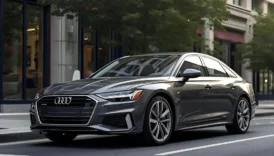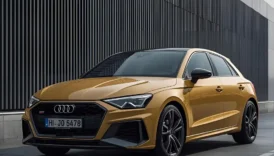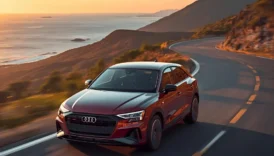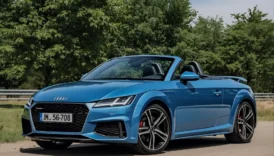2025 Audi RS Q3: Precision Performance and Features
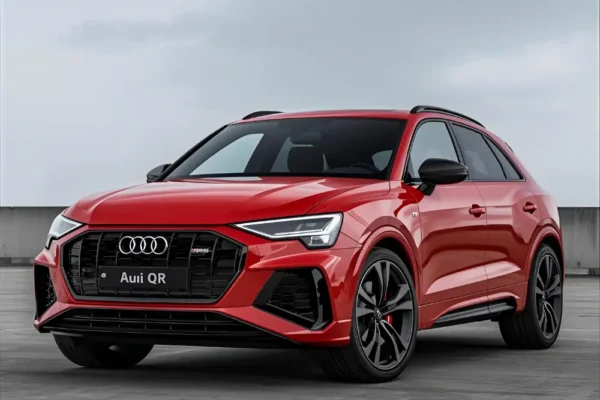
- 2025 Audi RS Q3: Precision Performance and Features
- What’s New in the 2025 Audi RS Q3: Design, Chassis, and Powertrain Evolution
- Exterior Design and Aerodynamic Enhancements
- Chassis, Weight Reduction, and Mechanical Updates
- Engine Options and Performance Review: The Legendary Five-Cylinder Turbo
- Powertrain Overview and Technical Highlights
- Real-World Performance and Driving Feel
- Driving Experience and Handling: Dynamic Balance and Everyday Control
- Chassis Control and Suspension Behavior
- Real-World Agility and Track Readiness
- Interior Design and Comfort: Sport-Focused Craftsmanship and Technology
- Cabin Layout and Material Craftsmanship
- Comfort, Seating, and Practicality
- Safety and Driver Assistance Systems: Confidence Through Innovation
- Structural Safety and Passive Protection
- Active Safety and Driver Assistance Features
- Technology and Infotainment: Inside the Digital RS Experience
- Digital Interfaces and Control Architecture
- Connectivity, AI Integration, and User Personalization
- Fuel Efficiency and Real-World Driving Consumption
- Engine Efficiency and Hybrid Support
- Real-World Consumption and Efficiency Tips
- Dimensions and Practicality: Compact Form Meets RS Utility
- Exterior Proportions and Aerodynamic Balance
- Cabin Practicality and Everyday Usability
- Common Issues and Reliability: What Long-Term Owners Report
- Engine and Drivetrain Durability
- Electronics and Software Stability
- Maintenance and Ownership Experience: Predictive Care and Performance Longevity
- Predictive Maintenance and Service Schedule
- Ownership, Warranty, and Digital Integration
- FAQ – User-Focused Questions (Including Fuel and Maintenance Costs)
- How powerful is the 2025 Audi RS Q3?
- What is the real-world fuel consumption of the RS Q3?
- What are the estimated fuel costs for daily driving?
- Is the 2025 Audi RS Q3 reliable for long-term ownership?
- How often does the RS Q3 require servicing?
- What is the maintenance cost of the 2025 RS Q3?
- What safety systems are included as standard?
- Is the RS Q3 comfortable for long trips?
- Does the RS Q3 support over-the-air updates and remote functions?
- Is the 2025 Audi RS Q3 environmentally efficient?
The 2025 Audi RS Q3 continues to push the limits of compact SUV performance with its potent 2.5-liter TFSI five-cylinder engine, advanced quattro system, and new-generation digital cockpit. Building upon Audi Sport’s heritage, it delivers an experience that blends track-ready agility with everyday usability. Subtle design updates, chassis refinement, and enhanced technology integration make this RS Q3 one of the most balanced and driver-focused models in its segment.
What’s New in the 2025 Audi RS Q3: Design, Chassis, and Powertrain Evolution
The 2025 Audi RS Q3 represents a refined evolution of Audi Sport’s compact high-performance SUV, focusing on sharper handling, lightweight improvements, and digital sophistication. While it retains its iconic five-cylinder turbocharged heart, this latest model introduces aerodynamic and technological updates that bring it closer to Audi’s flagship RS lineage in performance and precision.
Exterior Design and Aerodynamic Enhancements
The 2025 RS Q3 now carries a more sculpted and aerodynamic body language. The Singleframe honeycomb grille has been redesigned with a gloss-black surround, paired with larger air intakes and reprofiled LED Matrix headlights featuring Audi’s new Digital Light Signature. The muscular wheel arches continue to define its RS identity, accommodating 21-inch lightweight alloy wheels and ceramic brakes as an option.
At the rear, the bumper receives a more angular design, and the dual oval RS Sport exhausts have been repositioned for better symmetry and optimized airflow. A new rear diffuser enhances downforce while improving high-speed stability.
| Update Area | 2025 Enhancement |
|---|---|
| Headlights | New Matrix LED with Digital Light Signature |
| Grille | Gloss-black honeycomb with RS badging |
| Wheels | 20” standard, 21” optional Audi Sport alloys |
| Exhaust | Dual RS oval tips with variable flaps |
| Diffuser | Aerodynamic performance design |
The exterior color palette has also been expanded, adding Kyalami Green, Chronos Gray, and Nogaro Blue — all exclusive to the RS range.
Chassis, Weight Reduction, and Mechanical Updates
Beneath its striking exterior, the 2025 RS Q3 benefits from improved chassis rigidity and reduced unsprung mass. Audi has integrated more aluminum components into the suspension structure and front subframe, achieving up to 18 kg of weight savings compared to the previous model.
The RS adaptive suspension now features a recalibrated damping system, which continuously adjusts based on road surface and driving behavior. Paired with the latest quattro torque-vectoring system, the SUV achieves better cornering precision, eliminating understeer while enhancing lateral grip.
New-for-2025 Highlights:
- Revised adaptive suspension with variable damping control
- Enhanced quattro torque vectoring and stability program
- Lightweight aluminum suspension architecture
- Improved aerodynamics with reduced drag coefficient
- Digital cockpit upgrades and new RS drive modes
In essence, the 2025 Audi RS Q3 refines its aggressive character into something more mature, composed, and capable. It’s no longer just a fast compact SUV — it’s a precision tool engineered for enthusiasts who demand both speed and everyday versatility.
Engine Options and Performance Review: The Legendary Five-Cylinder Turbo
Few engines capture the spirit of Audi Sport like the 2.5-liter TFSI five-cylinder, and in the 2025 Audi RS Q3, it continues to be the heart and soul of performance. Revered for its unique rhythm and instant torque delivery, this engine combines racing pedigree with advanced engineering refinements — resulting in one of the most characterful powerplants in the compact performance segment.
Powertrain Overview and Technical Highlights
The 2025 RS Q3 retains its 2.5-liter TFSI inline-five engine, now updated for even sharper throttle response and improved thermal efficiency. Producing 400 hp (294 kW) and 480 Nm of torque, it delivers seamless acceleration across the rev range, while maintaining compliance with the latest Euro 7 emissions standards.
| Specification | 2025 Audi RS Q3 |
|---|---|
| Engine Type | 2.5L TFSI Inline-5 Turbo |
| Power Output | 400 hp (294 kW) |
| Torque | 480 Nm |
| Transmission | 7-speed S tronic dual-clutch |
| Drivetrain | quattro AWD |
| 0–100 km/h | 4.3 seconds |
| Top Speed | 250 km/h (280 km/h optional) |
| Hybrid System | 48V mild-hybrid assist |
The seven-speed S tronic transmission has been recalibrated for 2025, offering quicker upshifts and smoother downshifts under load. Power is distributed via Audi’s renowned quattro all-wheel-drive system, which dynamically allocates torque between front and rear axles based on traction and driving mode.
A new 48V mild-hybrid system assists during initial acceleration and coasting, helping improve responsiveness and reduce fuel consumption by up to 5%.
Real-World Performance and Driving Feel
Despite its compact footprint, the RS Q3 delivers supercar-like performance in daily driving scenarios. The distinctive five-cylinder firing order (1-2-4-5-3) produces a signature growl, enhanced through RS Sport exhaust flaps that open dynamically under throttle. The result is an emotionally charged sound that sets it apart from typical four-cylinder competitors.
Performance Highlights:
- 400 hp / 480 Nm for consistent high-output delivery
- quattro AWD for confident, rear-biased traction
- Launch Control for repeatable 4.3-second sprints
- RS Drive Modes (Comfort, Auto, Dynamic, Individual, RS1, RS2)
- Electromechanical steering with variable ratio for better control
On twisty roads, power delivery feels instantaneous, while the torque band remains broad and accessible. The RS Torque Splitter, borrowed from the RS3, enhances rotation by directing more torque to the outer rear wheel during aggressive cornering — improving agility and reducing understeer.
The 2025 Audi RS Q3 stands as a technical showcase for what compact SUVs can achieve when performance is prioritized without sacrificing daily comfort. It’s a living example of Audi’s commitment to precision, balance, and driver emotion — all distilled into a turbocharged five-cylinder masterpiece.
Driving Experience and Handling: Dynamic Balance and Everyday Control
The 2025 Audi RS Q3 delivers a driving experience that feels intuitive, playful, and composed — a blend that few compact SUVs manage to achieve. Its quattro system, adaptive suspension, and refined steering calibration make it both a capable daily driver and a legitimate performance machine when pushed to its limits.
Chassis Control and Suspension Behavior
The RS Q3 rides on an updated RS Sport Suspension Plus, featuring adaptive dampers that adjust firmness within milliseconds. This system continuously adapts to road conditions, driving style, and selected mode within the Audi Drive Select suite.
In Comfort mode, the SUV offers compliant damping that easily absorbs rough roads. Switch to Dynamic or RS2, and the suspension stiffens, minimizing body roll and sharpening cornering precision. The steering also gains extra weight for better feedback, and throttle response becomes instant.
The Progressive Steering System, standard on all RS Q3 models, adjusts the steering ratio based on wheel angle. This results in light, effortless maneuvering at low speeds and increased precision during spirited driving. Combined with the quattro torque vectoring system, the SUV achieves a natural balance between agility and stability.
Real-World Agility and Track Readiness
The RS Q3 feels smaller than its dimensions suggest. The short wheelbase and low center of gravity contribute to rapid turn-in response, while the torque-vectoring system ensures seamless transitions between understeer and oversteer.
Drivers can customize handling dynamics through the RS1 and RS2 Drive Modes, accessible via the steering wheel-mounted “RS Mode” button. These profiles allow adjustment of steering weight, suspension stiffness, transmission behavior, and exhaust note — creating distinct personalities for urban comfort or aggressive track driving.
Driving Highlights:
- Adaptive RS Sport Suspension with variable damping
- Progressive steering for direct and responsive control
- RS Torque Splitter improving cornering agility
- RS1/RS2 customizable modes for tailored dynamics
- Four-piston brakes with optional carbon-ceramic upgrade
Under braking, the ventilated discs deliver consistent stopping power, aided by Audi’s precision brake-by-wire system that enhances modulation and pedal feel. Optional carbon-ceramic brakes reduce fade during repeated high-speed use, ensuring predictable performance even under heavy load.
Despite its aggressive setup, the RS Q3 remains impressively refined for everyday use. The cabin remains quiet at highway speeds, and the suspension effortlessly adapts between city comfort and racetrack precision.
The 2025 Audi RS Q3 succeeds where many performance SUVs struggle — offering genuine excitement without sacrificing practicality. It’s a machine built for drivers who crave responsiveness and control, whether on winding roads or in daily traffic.
Interior Design and Comfort: Sport-Focused Craftsmanship and Technology
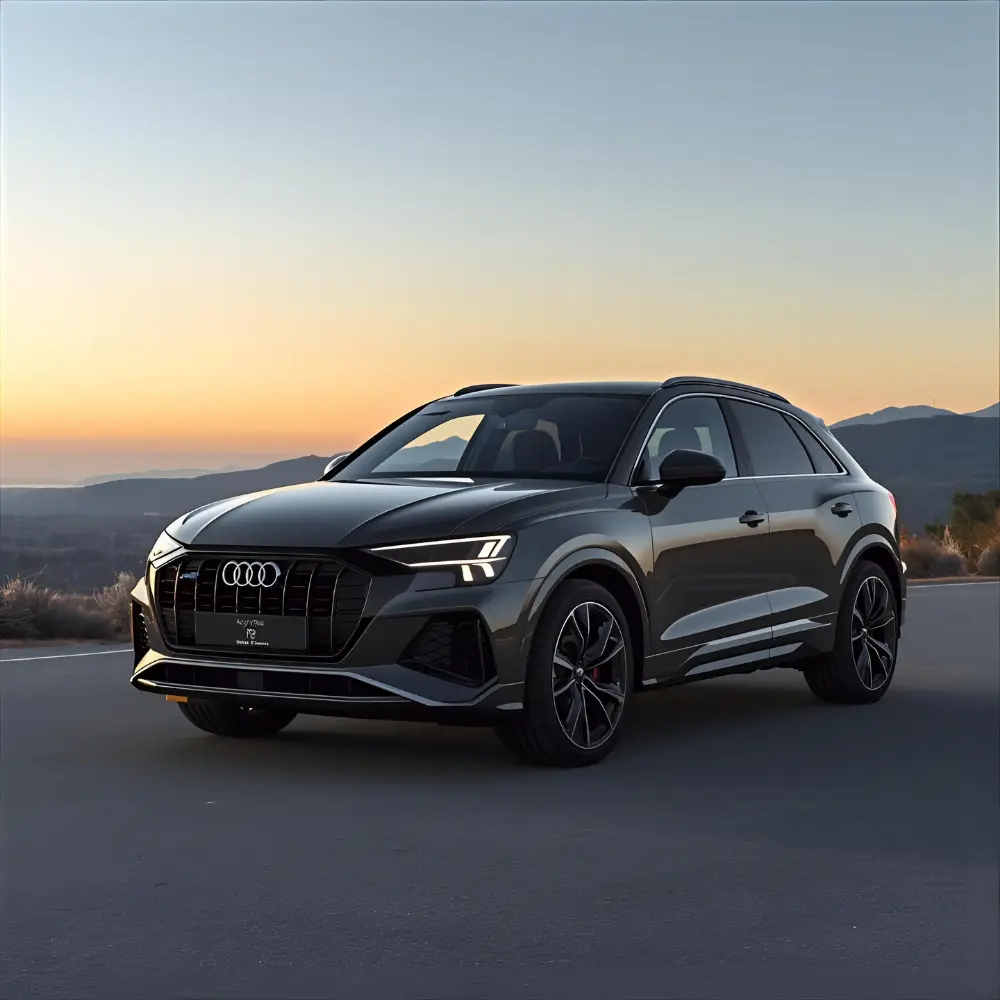
Inside the 2025 Audi RS Q3, performance meets precision craftsmanship. Every surface, control, and interface reflects Audi Sport’s dedication to detail — blending high-quality materials with ergonomic design and modern technology. Despite its compact dimensions, the RS Q3 delivers both driver engagement and premium comfort.
Cabin Layout and Material Craftsmanship
The interior’s design mirrors the aggressive yet refined spirit of the RS lineup. The RS flat-bottom steering wheel immediately signals its performance intent, while the Audi Virtual Cockpit Plus anchors the dashboard with a 12.3-inch high-resolution digital cluster offering RS-specific views such as g-force meters, lap timers, and engine temperature displays.
Premium Fine Nappa leather upholstery with honeycomb contrast stitching defines the RS aesthetic. Buyers can select from color accents like Express Red, Ara Blue, or Pulse Orange, integrated into the stitching and seat belts. Aluminum or Carbon Atlas trims further emphasize its motorsport DNA.
| Measurement | Front | Rear |
|---|---|---|
| Headroom | 1,060 mm | 970 mm |
| Legroom | 1,040 mm | 915 mm |
| Shoulder Room | 1,460 mm | 1,410 mm |
| Cargo Capacity | 530 L | 1,525 L (rear seats folded) |
The ambient lighting system offers 30 customizable colors, allowing the cabin to transform from subtle luxury to sporty energy. The 3D aluminum mesh inlays, soft-touch dashboard, and RS logos stitched into the headrests add to the bespoke feeling.
Comfort, Seating, and Practicality
The RS Sport seats provide excellent lateral support during cornering while remaining comfortable for long journeys. Optional ventilation and massage functions further elevate driving comfort. The flat floor in the rear improves legroom, making the RS Q3 surprisingly accommodating for a performance SUV of this size.
Comfort features include:
- Dual-zone climate control with digital interface
- Heated front and rear seats with ventilation option
- Panoramic sunroof with acoustic glass
- Bang & Olufsen 3D Premium Sound System (15 speakers)
- Wireless phone charging and multiple USB-C ports
The RS Design Package Plus introduces Alcantara on door armrests and center console surfaces, adding tactile richness to the interior. Audi’s commitment to sustainability is evident through the use of recycled Dinamica microfiber materials, ensuring eco-conscious refinement.
Interior Highlights:
- RS flat-bottom steering wheel with drive mode control
- Virtual Cockpit Plus with RS performance metrics
- Fine Nappa leather upholstery with contrast stitching
- Bang & Olufsen 3D sound for immersive acoustics
- Ergonomic, sport-tuned comfort for all passengers
The 2025 Audi RS Q3 interior strikes a perfect balance between race-inspired design and daily functionality. It’s bold yet comfortable, digital yet tactile — a clear reflection of Audi Sport’s evolution toward intelligent luxury performance.
Safety and Driver Assistance Systems: Confidence Through Innovation
The 2025 Audi RS Q3 integrates performance and protection seamlessly, ensuring that every drive feels secure without compromising agility. From the vehicle’s reinforced architecture to its predictive driver-assistance systems, the RS Q3 provides cutting-edge safety technology designed to anticipate and respond before the driver even realizes a potential risk.
Structural Safety and Passive Protection
The RS Q3 is built on the MQB Evo platform, which employs a mix of ultra-high-strength steel and lightweight aluminum to maximize rigidity while reducing weight. The result is exceptional crash energy distribution and passenger cell stability — key factors in the vehicle’s five-star Euro NCAP safety rating.
Standard airbag coverage includes:
- Dual-stage front airbags
- Side-impact airbags for front and rear passengers
- Curtain airbags extending across both rows
- Knee airbags for the driver
- Seatbelt pre-tensioners with load limiters
Audi’s Pre Sense Front and Pre Sense Basic systems use radar and camera sensors to detect potential collisions and prepare the cabin by tightening seatbelts, closing windows, and pre-loading the brakes.
Active Safety and Driver Assistance Features
The 2025 RS Q3 includes a comprehensive suite of semi-autonomous features grouped under Tour, City, and Park assistance packages. These technologies work in harmony to support safe, confident driving in all environments.
| Assistance Feature | Function |
|---|---|
| Adaptive Cruise Assist | Maintains distance and lane position automatically |
| Lane Departure & Lane Keep Assist | Provides steering corrections to stay centered |
| Rear Cross-Traffic Alert | Warns of vehicles when reversing from parking spots |
| Traffic Sign Recognition | Detects and displays real-time speed limits |
| Blind Spot Monitoring | Illuminates warnings in mirrors under risk conditions |
| Park Assist Plus | Steers the car into and out of parking spaces autonomously |
The Adaptive Cruise Assist system uses radar and navigation data to adjust acceleration and braking, even in curves or changing speed zones. Meanwhile, Side Assist and Exit Warning prevent unsafe maneuvers in city traffic by monitoring approaching vehicles and cyclists.
During low-speed maneuvers, the 360° Surround View Camera and Parking System Plus provide visual and audio guidance, ensuring precision in tight spaces.
Safety Highlights:
- Reinforced MQB Evo platform for enhanced crash resistance
- Audi Pre Sense suite for predictive protection
- Adaptive Cruise Assist for semi-autonomous driving
- Cross-Traffic and Exit Warning for urban awareness
- 360° cameras for complete environmental visibility
The 2025 Audi RS Q3 goes beyond conventional safety expectations — using intelligent sensors and AI-driven prediction to create an active safety bubble around the driver and passengers. It’s performance security, engineered with the same precision as its speed.
Technology and Infotainment: Inside the Digital RS Experience
The 2025 Audi RS Q3 exemplifies the fusion of high performance and advanced connectivity. Every technological component is designed to enhance driver engagement while ensuring intuitive usability. From the Virtual Cockpit Plus to the MMI Touch Response system, the RS Q3 brings an entirely digital, driver-centered experience inspired by Audi’s flagship models.
Digital Interfaces and Control Architecture
At the core of the RS Q3’s interior technology lies the Audi Virtual Cockpit Plus, featuring a 12.3-inch TFT display that delivers RS-specific visualizations including boost pressure, lap timing, and g-force tracking. The customizable layout allows the driver to switch between Classic, Sport, and RS Performance modes with a simple steering-wheel button.
Complementing the cockpit is the MMI Navigation Plus system with 10.1-inch touchscreen, integrated into the dashboard for ergonomic access. The display supports haptic feedback, offering a tactile response for precision control even during spirited driving.
| Feature | Specification |
|---|---|
| Instrument Cluster | 12.3″ Audi Virtual Cockpit Plus |
| Center Display | 10.1″ MMI Touch Response |
| Connectivity | 5G and Wi-Fi hotspot with built-in eSIM |
| Audio | Bang & Olufsen 3D Premium Sound System (15 speakers) |
| Voice Control | Natural voice assistant with Alexa integration |
| Navigation | MMI Navigation Plus with satellite imagery |
The MIB 3 infotainment platform powering these systems ensures faster processing and smoother transitions between menus. It also supports OTA (Over-the-Air) updates, keeping navigation, maps, and software features current without dealership visits.
Connectivity, AI Integration, and User Personalization
The 2025 RS Q3 embraces Audi’s latest connectivity ecosystem, allowing for seamless smartphone integration through wireless Apple CarPlay and Android Auto. The myAudi App connects the driver to vehicle data remotely — enabling pre-conditioning, service scheduling, and even vehicle tracking.
Audi’s natural language assistant has evolved beyond basic commands. Drivers can now issue contextual prompts such as “I need to cool down” or “Find the nearest gas station,” and the system will execute climate adjustments or navigation routes instantly.
Technology Highlights:
- 5G connectivity with real-time traffic and route optimization
- Virtual Cockpit Plus with customizable performance metrics
- Bang & Olufsen 3D sound system with surround acoustics
- Voice assistant + Alexa integration for connected convenience
- OTA updates + myAudi App for remote management and diagnostics
Beyond entertainment, technology plays a safety role too. The head-up display (HUD) projects navigation and speed warnings directly onto the windshield, reducing distraction. Audi’s Car-to-X communication network connects the RS Q3 with surrounding infrastructure, exchanging data about road hazards and traffic flow.
In the 2025 Audi RS Q3, technology isn’t a distraction — it’s an extension of the driver’s awareness. Every function is crafted to serve precision, clarity, and connection, making this RS SUV one of the smartest in its class.
Fuel Efficiency and Real-World Driving Consumption
Despite its thrilling performance and five-cylinder soundtrack, the 2025 Audi RS Q3 is impressively efficient for a performance SUV. Through the intelligent use of 48V mild-hybrid technology, cylinder deactivation, and optimized thermal management, Audi manages to balance agility with responsibility — delivering a more sustainable daily-driving experience without compromising excitement.
Engine Efficiency and Hybrid Support
The RS Q3’s 2.5-liter TFSI five-cylinder engine benefits from several efficiency-focused upgrades for 2025. The 48V mild-hybrid system assists during coasting and low-load acceleration, using a belt alternator starter (BAS) to recover kinetic energy during braking and deceleration. This energy is stored in a compact lithium-ion battery, powering auxiliary systems and enabling engine-off coasting for up to 40 seconds.
The start-stop system engages seamlessly at speeds below 22 km/h, further conserving fuel during urban driving. When combined with cylinder deactivation, the engine temporarily shuts off two cylinders under light throttle, functioning as a three-cylinder unit to reduce consumption without affecting performance.
| Parameter | Specification |
|---|---|
| Engine Type | 2.5L TFSI Inline-5 (MHEV) |
| Power Output | 400 hp / 480 Nm |
| Transmission | 7-speed S tronic |
| Drivetrain | quattro AWD |
| WLTP Combined | 8.9–9.3 L/100 km |
| CO₂ Emissions | 203–212 g/km |
| Fuel Tank Capacity | 60 L |
This combination of electrified efficiency and mechanical precision allows the RS Q3 to outperform most rivals in both acceleration and fuel economy.
Real-World Consumption and Efficiency Tips
In mixed driving conditions, the RS Q3 averages around 9.0 L/100 km, while steady highway cruising can reduce that figure to 7.8 L/100 km. City traffic tends to push consumption closer to 10.5 L/100 km, though the mild-hybrid’s coasting and regenerative braking significantly offset idling losses.
Audi Drive Select also influences efficiency:
- Efficiency Mode softens throttle response and optimizes gear shifts for low RPMs.
- Auto Mode balances performance and consumption dynamically.
- Dynamic Mode prioritizes power delivery, sacrificing a small amount of efficiency for sharper throttle and steering response.
Fuel Efficiency Highlights:
- 48V mild-hybrid system with coasting and energy recuperation
- Cylinder deactivation improving fuel economy at cruising speeds
- Predictive start-stop using GPS and sensor input
- Optimized aerodynamics reducing drag coefficient
- Efficient transmission mapping for smoother power delivery
The 2025 Audi RS Q3 proves that performance and efficiency no longer need to be mutually exclusive. By combining electrified innovation with Audi’s hallmark engineering discipline, it delivers both thrilling acceleration and commendable real-world economy — a testament to modern RS evolution.
Dimensions and Practicality: Compact Form Meets RS Utility
The 2025 Audi RS Q3 demonstrates that compact proportions can coexist with genuine practicality. Despite its performance-focused nature, Audi has ensured that the RS Q3 remains versatile enough for everyday life — with thoughtful cabin packaging, adjustable cargo flexibility, and a premium yet functional layout.
Exterior Proportions and Aerodynamic Balance
The RS Q3’s body design prioritizes stability and aerodynamics. The sculpted profile, wide stance, and reduced ride height (compared to the standard Q3) not only enhance visual aggression but also contribute to improved handling. The adaptive suspension lowers automatically at high speeds, optimizing drag and downforce.
| Dimension | Measurement |
|---|---|
| Length | 4,508 mm |
| Width (with mirrors) | 2,024 mm |
| Height | 1,600 mm |
| Wheelbase | 2,680 mm |
| Ground Clearance | 155 mm (adjustable) |
| Cargo Capacity | 530 L (seats up) / 1,525 L (folded) |
| Turning Circle | 11.8 m |
While compact in footprint, the RS Q3 offers proportions that provide impressive interior room for passengers and luggage alike. Short overhangs and a relatively long wheelbase maximize stability and balance while keeping maneuverability high — ideal for urban driving or tight parking spaces.
Cabin Practicality and Everyday Usability
Inside, practicality blends with premium comfort. The split-folding rear bench (40:20:40) expands versatility, enabling passengers to carry bulky luggage or sports equipment with ease. The electric tailgate allows hands-free operation, and a low loading sill makes everyday use effortless.
Practical interior touches include:
- Flat rear floor design improving legroom for center passengers
- Multiple USB-C ports for all occupants
- Dual storage compartments under the cargo floor
- Retractable parcel shelf for organized cargo area
- Acoustic glass and dense door insulation reducing cabin noise
The 530-liter luggage area comfortably fits three large suitcases, while folding the rear seats expands space to 1,525 liters — rivaling midsize SUVs in utility. The underfloor storage tray can house emergency tools, charging cables, or compact items securely.
Practicality Highlights:
- Adjustable cargo capacity (530–1,525 L) for flexible use
- Hands-free tailgate for convenient access
- Split rear seats improving cargo-passenger balance
- Compact dimensions with large interior volume
- RS practicality without compromising sportiness
For a performance SUV, the 2025 Audi RS Q3 is remarkably accommodating. It brings together the agility of a hot hatch with the space and convenience of a crossover, proving that RS doesn’t just stand for speed — it also means smart, real-world functionality.
Common Issues and Reliability: What Long-Term Owners Report
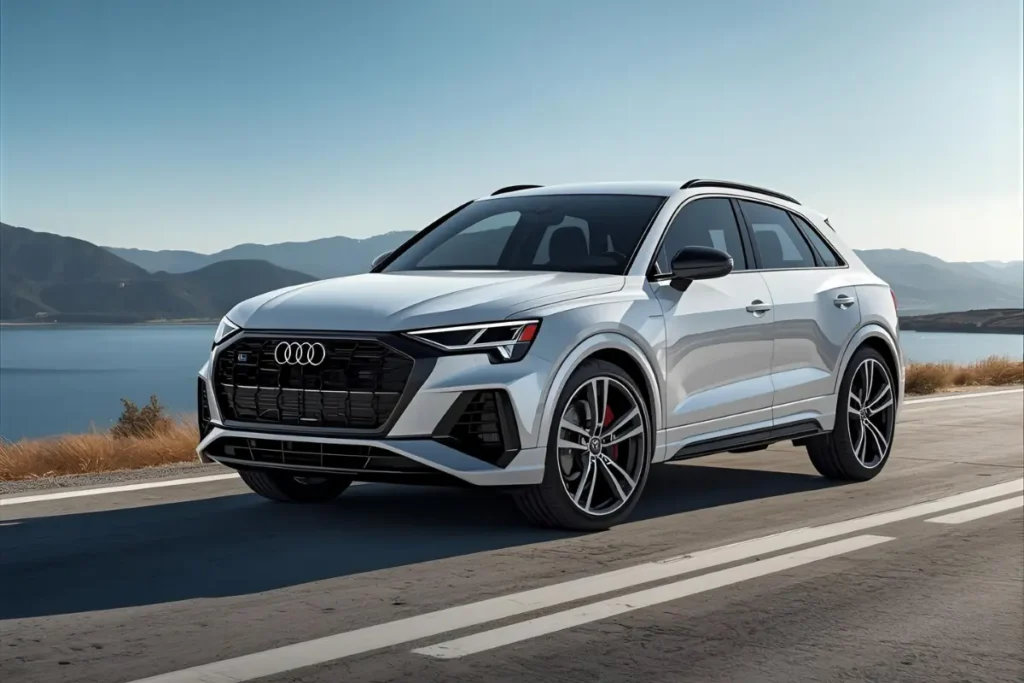
The 2025 Audi RS Q3 builds upon years of refinement within the RS lineup, delivering dependable performance supported by proven engineering. With its robust 2.5L TFSI engine and quattro drivetrain, reliability is one of the model’s strongest assets when properly maintained. However, as with any high-performance vehicle, consistent upkeep is essential to preserve its long-term stability.
Engine and Drivetrain Durability
Audi’s five-cylinder TFSI is one of the brand’s most tested engines, used across multiple RS models including the RS3 and TT RS. Its forged crankshaft, integrated oil cooling circuit, and roller-bearing turbocharger design minimize wear even under high load.
Owner reports highlight excellent reliability, with most issues being minor and software-related. The most common maintenance points include:
- Ignition coil or spark plug replacements around 60,000–70,000 km
- Routine turbo inspection during service intervals (as precaution)
- Regular transmission fluid checks for the S tronic gearbox
- Brake pad and disc monitoring, especially under track use
- Suspension calibration after extended high-performance driving
The 7-speed S tronic dual-clutch transmission has shown consistent reliability when serviced according to factory guidelines. Its mechatronic unit and clutches are built to handle repeated launches without degradation, aided by improved thermal control in 2025.
Electronics and Software Stability
As vehicles become increasingly digital, reliability depends not only on hardware but also on software precision. The RS Q3’s MIB 3 infotainment system and driver-assistance sensors occasionally require recalibration after windshield replacements or OTA updates — minor adjustments that Audi’s service network easily handles.
The 48V mild-hybrid system is sealed and maintenance-free, while its regenerative braking setup actually extends the lifespan of brake pads. Additionally, predictive diagnostics continuously monitor systems and notify the driver of potential faults long before failure.
Reliability Highlights:
- Proven 2.5L TFSI engine with forged internals
- S tronic transmission built for long-term endurance
- 48V hybrid architecture designed to be maintenance-free
- Predictive diagnostics for early fault detection
- Minimal electronic issues thanks to OTA software refinement
Long-term owners report that when maintained per schedule, the RS Q3 remains smooth and responsive well beyond 150,000 km. With solid engineering and Audi’s evolving digital service ecosystem, the 2025 Audi RS Q3 stands out as one of the most dependable compact performance SUVs in its class — robust, refined, and remarkably resilient.
Maintenance and Ownership Experience: Predictive Care and Performance Longevity
The 2025 Audi RS Q3 is engineered not only for high performance but also for long-term reliability and low-maintenance operation. Its intelligent systems monitor wear, predict service intervals, and communicate directly with Audi’s digital ecosystem — making ownership as seamless as driving it.
Predictive Maintenance and Service Schedule
Audi equips the RS Q3 with a Condition-Based Maintenance (CBM) system that adapts service intervals to individual driving patterns. Instead of relying solely on fixed mileage limits, the car continuously analyzes oil quality, temperature cycles, and braking frequency to determine when specific components require attention.
Standard maintenance milestones include:
- Engine oil and filter: every 15,000–20,000 km or once annually
- Air and cabin filters: every 24 months
- Brake fluid replacement: every 2 years
- Transmission inspection: every 60,000–80,000 km
- Coolant and hybrid battery check: every 4 years
- Software and OTA updates: ongoing via myAudi App
The 48V mild-hybrid system in the RS Q3 is entirely maintenance-free, using solid-state batteries and regenerative braking to reduce wear on mechanical components. The brake system benefits from reduced load thanks to energy recovery, extending pad and rotor life.
The SUV’s mechanical components, including the RS adaptive suspension and S tronic gearbox, are designed for endurance. Regular inspection ensures sustained precision in damping and shifting characteristics even after extended high-speed use.
Ownership, Warranty, and Digital Integration
Audi provides one of the most comprehensive ownership experiences in the segment. The 4-year / 80,000 km vehicle warranty covers most components, while the 8-year / 160,000 km hybrid system warranty guarantees confidence in long-term durability. A 3-year complimentary maintenance program covers essential fluids and inspections.
Owners can access the myAudi App to remotely monitor the vehicle’s health, schedule service appointments, and receive diagnostic alerts. The app also provides driving efficiency feedback and maintenance reminders synced to the vehicle’s onboard computer.
Ownership Highlights:
- Predictive maintenance with real-time wear analysis
- Regenerative braking extending component lifespan
- Comprehensive 4-year warranty + hybrid coverage
- myAudi App integration for monitoring and scheduling
- OTA updates maintaining optimal performance
Audi service centers use eco-friendly fluids and recycled materials, aligning with the brand’s sustainability goals. The RS-specific technician training ensures that each service maintains the car’s factory precision.
The 2025 Audi RS Q3 delivers an ownership experience defined by foresight and dependability. Through intelligent systems, digital support, and robust engineering, it turns the complexity of performance maintenance into an effortless, well-managed process — ensuring every kilometer feels as precise as the first.
FAQ – User-Focused Questions (Including Fuel and Maintenance Costs)
How powerful is the 2025 Audi RS Q3?
The 2025 Audi RS Q3 features a 2.5-liter TFSI five-cylinder engine producing 400 hp and 480 Nm of torque, paired with a 7-speed S tronic transmission and quattro AWD. It accelerates from 0–100 km/h in just 4.3 seconds, maintaining strong mid-range torque for both city driving and spirited track sessions.
What is the real-world fuel consumption of the RS Q3?
On average, the RS Q3 consumes around 9.0 L/100 km in mixed driving conditions. Highway efficiency can drop to 7.8 L/100 km, while city traffic raises it to approximately 10.5 L/100 km. Efficiency benefits come from 48V mild-hybrid assistance, coasting, and cylinder deactivation during light throttle use.
What are the estimated fuel costs for daily driving?
Assuming a fuel price of $1.60 per liter, the RS Q3 costs about $14–15 per 100 km in typical mixed driving. Long highway trips are slightly cheaper due to reduced consumption. Audi’s predictive efficiency systems and hybrid coasting help minimize running expenses without reducing power delivery.
Is the 2025 Audi RS Q3 reliable for long-term ownership?
Yes. The RS Q3’s proven 2.5L TFSI engine, quattro drivetrain, and S tronic gearbox are engineered for longevity. When maintained per Audi’s CBM schedule, owners typically report minimal mechanical issues, with most software updates handled via OTA (Over-the-Air) improvements.
How often does the RS Q3 require servicing?
Routine servicing occurs every 15,000–20,000 km or annually, depending on usage. The car’s Condition-Based Maintenance system monitors wear and fluid health in real time, ensuring that service reminders appear only when truly necessary.
What is the maintenance cost of the 2025 RS Q3?
Maintenance costs remain moderate for its segment. The 48V mild-hybrid system requires no scheduled service, and regenerative braking reduces pad wear. Audi’s 3-year complimentary service covers essentials, while the myAudi App helps plan future maintenance efficiently.
What safety systems are included as standard?
Every RS Q3 comes with Audi Pre Sense, Adaptive Cruise Assist, Lane Departure Warning, and Rear Cross-Traffic Alert. These systems use radar and camera data to monitor surroundings, reduce collision risks, and support semi-autonomous operation during long commutes.
Is the RS Q3 comfortable for long trips?
Absolutely. The RS Sport Suspension, ventilated sport seats, and Bang & Olufsen 3D audio system create a comfortable long-distance driving environment. Cabin insulation and dual-zone climate control further enhance refinement, even at highway speeds.
Does the RS Q3 support over-the-air updates and remote functions?
Yes. The MMI Touch Response system and myAudi App enable OTA updates for infotainment, navigation, and safety modules. Owners can also check diagnostics, control locks, and access maintenance reminders remotely.
Is the 2025 Audi RS Q3 environmentally efficient?
For a performance SUV, yes. The 48V mild-hybrid architecture, coasting function, and cylinder deactivation significantly reduce CO₂ emissions. The engine meets Euro 7 standards, combining high output with responsible efficiency — a hallmark of modern RS design.

